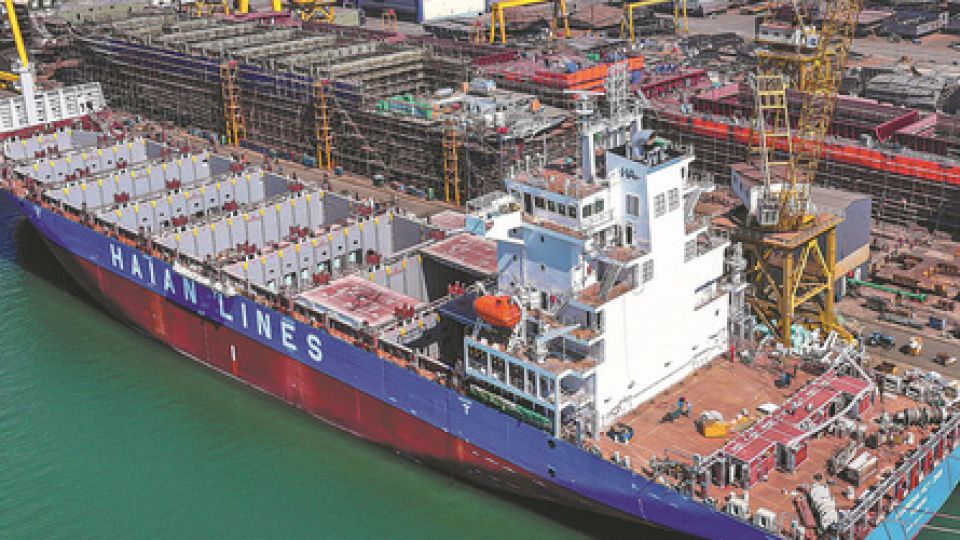June 6, 2024
BEIJING – Amid rising global demand, technological progress and new international environmental regulations, market watchers and shipbuilders predict that China’s shipbuilding industry will contribute significantly to the country’s foreign trade this year.
Many global shipping and energy companies, as well as automakers, have placed a large number of orders for ships like mega container vessels, liquefied natural gas (LNG) carriers and vehicle carriers from Chinese shipyards in recent years.
Reflecting this demand, Chinese companies exported a total of 1,809 vessels in the first four months, marking a 19 percent increase year-on-year. The value of these exports reached 100.3 billion yuan ($13.84 billion), surging 108.4 percent, said the General Administration of Customs.
New international regulations designed to cut carbon emissions in the maritime industry are pushing shipowners to buy and invest in greener ships, said Li Yanqing, secretary-general of the Beijing-based China Association of the National Shipbuilding Industry (CANSI).
Li said this shift favors Chinese shipbuilders equipped with the technology to construct such eco-friendly vessels.
Even though Chinese companies face strong competition from rivals in South Korea and Japan, the country’s ability to offer cost-effective solutions without compromising on quality can help it to maintain a competitive edge in the global market, said Zeng Ji, a professor of shipbuilding at Shanghai Maritime University.
Chinese shipyards saw the volume of new orders amount to 24.14 million dead-weight tons in the first quarter, up 59 percent year-on-year, accounting for 69.6 percent of the world’s total, CANSI said.
Zhou Jinglei, vice-president of Taizhou Sanfu Ship Engineering Co Ltd, a Taizhou, Jiangsu province-based private shipyard, said the company currently has orders to build 45 vessels, with production plans scheduled through to 2027.
“While maintaining our advantage in building multipurpose heavy lift vessels, we have increased our investment in technological innovation to develop high value-added ships equipped with advanced methanol and LNG dual-fuel power systems,” said Zhou.
Compared to traditional fuel-powered containerships, dual fuel-powered container vessels can further cut carbon, nitrogen oxide and sulfur emissions, he said, adding that these ships can be flexibly deployed on major global shipping routes.
China Merchants Jinling Shipyard (Yangzhou) Dingheng Co Ltd, a subsidiary of State-owned China Merchants Group, set sail a 16,300-ton dual-fuel chemical tanker in late May. Its delivery date to a Swedish client is expected in late June. The vessel will be the tenth of its type to be delivered to the same shipowner.
Liu Qiang, head of the company’s sales unit, said this type of ship is one of the company’s pillar products, and its key feature is the use of floating frequency and floating pressure electrical systems, equipped with a large uninterrupted power supply system.
“This ensures that the ship can navigate for 20 minutes in a loss-of-power situation, significantly enhancing its safety and maneuverability,” Liu said, noting that his company received seven new ship orders in the first four months, with its order book now full through to 2027.
Shipyards in Jiangsu province exported various types of ships valued at 34.83 billion yuan in the first four months, making it the top province in terms of export value nationwide, statistics from Nanjing Customs showed.
This represents a 90.3 percent increase compared to the same period last year and accounts for 34.7 percent of China’s total value of ship exports between January and April.


